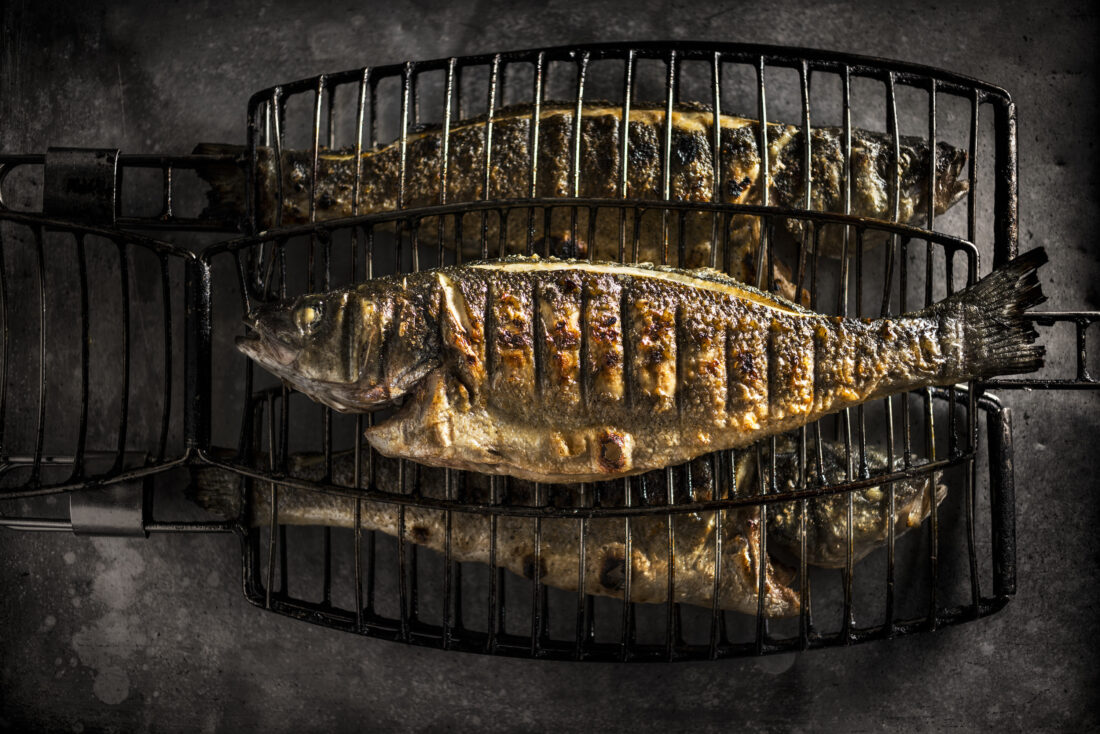For Pano Karatassos, there’s nowhere to eat seafood quite like a classic Greek psarotaverna, or fish tavern. “Traditionally, a friend or relative would unload a fresh catch from the boat in the morning, and that fish would go into a display in the restaurant,” says the Atlanta chef and restaurateur. “The guests would come in and order the fish until they were all gone. It doesn’t get any fresher than that.” Often, various meze—small plates of meat, cheese, olives, dips, breads, vegetables, or more fish—would precede a main course of whole grilled or baked fish.

Karatassos’s award-winning restaurant Kyma, a linchpin of the Buckhead Life Restaurant Group his father founded, is modeled after just such a psarotaverna. But whole fish is not something to be reserved for a special-occasion night out—it’s something anyone can make at home. “If you’re raised in Greece, you know what a fresh fish looks like at the market and you know how to cook it,” Karatassos says. “But here in the United States, most of us didn’t learn how to select whole fish and take the skeleton out.”
As an antidote to that lack of familiarity, he dedicated an entire page of his 2018 cookbook, Modern Greek Cooking, to a “whole fish pep talk.” That primer outlined everything a home cook needs to know to prepare a beautiful whole fish centerpiece at home, be it Karatassos’s personal favorite Mediterranean fish, Branzino, or any other fresh find from a market or fishmonger, like red snapper. “If you try to fillet a fish while it’s raw, you’re going to lose a lot of meat,” he says. “If you learn how to just cook the fish whole, put it on the cutting board, and follow this technique, you’ll have a beautiful fish and the best yield possible.”
He’s still giving that pep talk today—and holds that a whole fish is just the thing for a summer grill session. Below, he talked us through the whole process, from choosing a fresh fish to removing the pesky bones.
Select
At the market, look for red gills and clear eyes, plus flesh that springs back and leaves no fingerprints. “If you only do these first steps, you’re going to end up with fresh fish,” Karatassos says—but if you want, you can also sniff the fish to confirm it has a clean ocean smell. In terms of portions, you’re looking for 12 ounces to a pound of fish per person. After you select your fish, ask the fishmonger to clean it—that is, remove the gills and belly and scrape off the scales.
Store
Buy as close to cooking time as possible, and maintain the fish in the swimming position (upright, with the belly down) in the refrigerator; if it is stored fillet side down, it will deteriorate faster.
Prepare
While holding the fish, keep it in the swimming position. Remove any blood by washing it under cold water, then pat it dry with paper towels. Before cooking, Karatassos makes a quarter-inch incision along both sides of the dorsal spine from head to tail. “This is such a helpful trick because when your fish is done cooking, you can use your two fingers and your thumb to pull the dorsal fin out very easily.”
Cook
Karatassos sometimes makes a salt crust for his whole fish, but most often, he just throws it on the grill and douses it in a lemon vinaigrette. “If you want to keep it super simple, though, just get your favorite extra virgin olive oil and then squirt some fresh lemon on it,” he advises. To know when the fish is done, he inserts a metal cake taster (you can also use a thin metal skewer) near the spine and touches it to his bottom lip. It should feel warm—not full-blown hot and definitely not cold—when the fish is cooked properly.
Serve
To serve the fish, you’ll need to get the bones out—a simpler process than it seems due to the incisions made at the prep stage. If you are right-handed, you want the dorsal fin on your right-hand side and the head toward your belly. Gently, with two fingers and a thumb, pull the dorsal fin off. At this point, slice the head and tail off, too.
“Then, take your knife and go right into the center of the fish where the dorsal fin was, underneath the skeleton, and open it like you’re turning the page of a book,” Karatassos says. “Now you can easily lift the skeleton out of the fillet on the opposite side you started on and with some tweezers, pull out the pin bones on both sides, seven to nine bones, depending on the species of fish, on either side.” Then, practice makes perfect. “Once you’ve done one fish, and then another, it just becomes easier and easier.”







